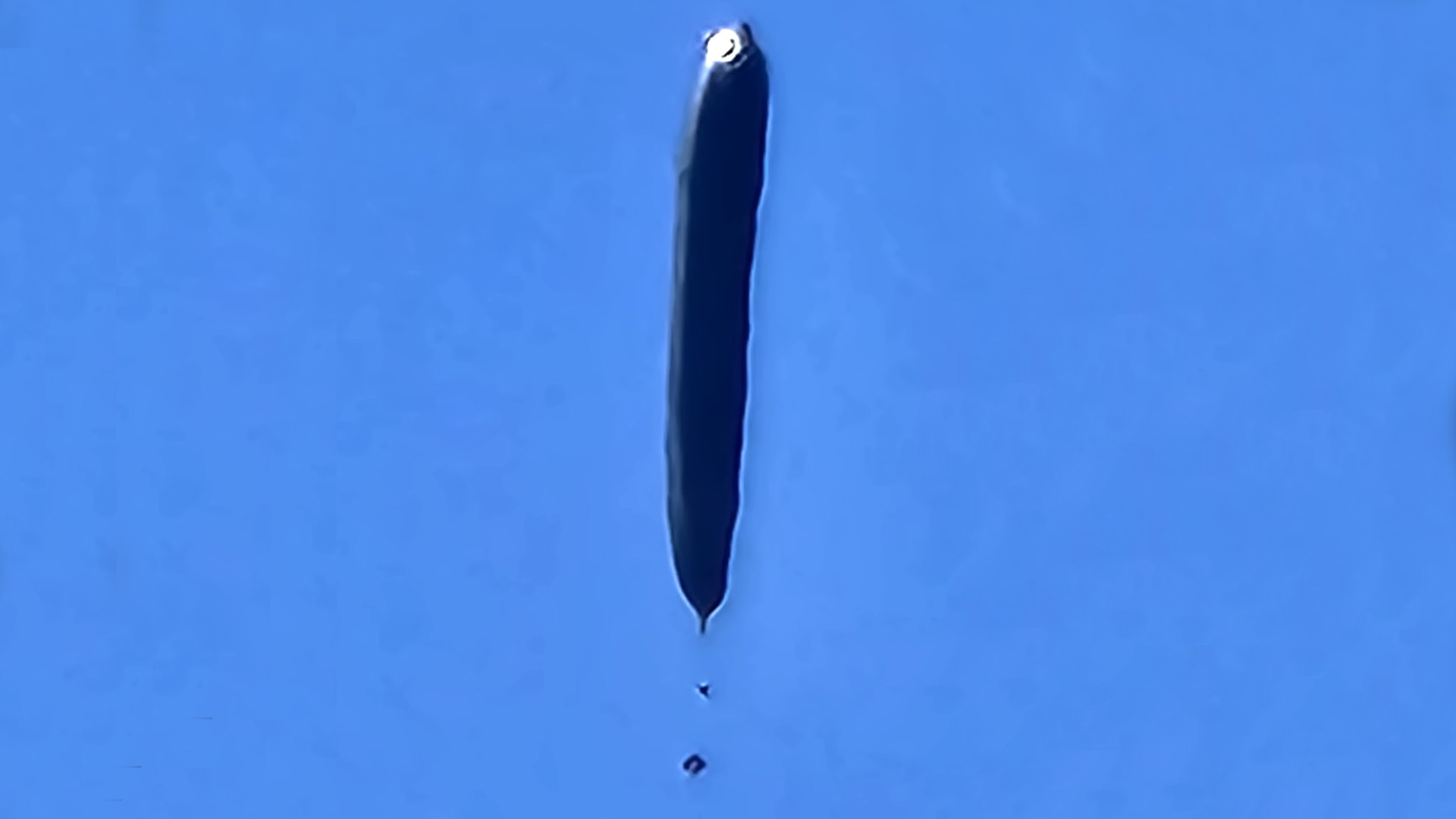Ukraine routinely sends drones to attack targets across the border, but Russian authorities have recently claimed they are facing a new aerial threat.
At about 7 p.m. Moscow time April 20, “an attempt by the Kyiv regime to carry out a terrorist attack using two small-sized balloons on objects on the territory of the Russian Federation was stopped,” the Russian Defense Ministry reported on its Telegram channel. The balloons were “destroyed over the territories of the Tula and Moscow regions.”
Tula is about 240 miles northeast of Ukraine while Moscow is about 290 miles northeast.
The Russian MoD also claimed its forces downed five Ukrainian balloons on April 18. “According to Russian news reports, the Ukrainian balloons are equipped with a GPS module and carry explosives,” The Associated Press reported.
These claimed balloon shootdowns follow the discovery last month of a converted Ukrainian weather balloon “carrying a kilogram of TNT” that “fell in the forest near the village of Novaya Slobodka,” about 40 miles from the border, the Russian MASH news agency reported at the time.
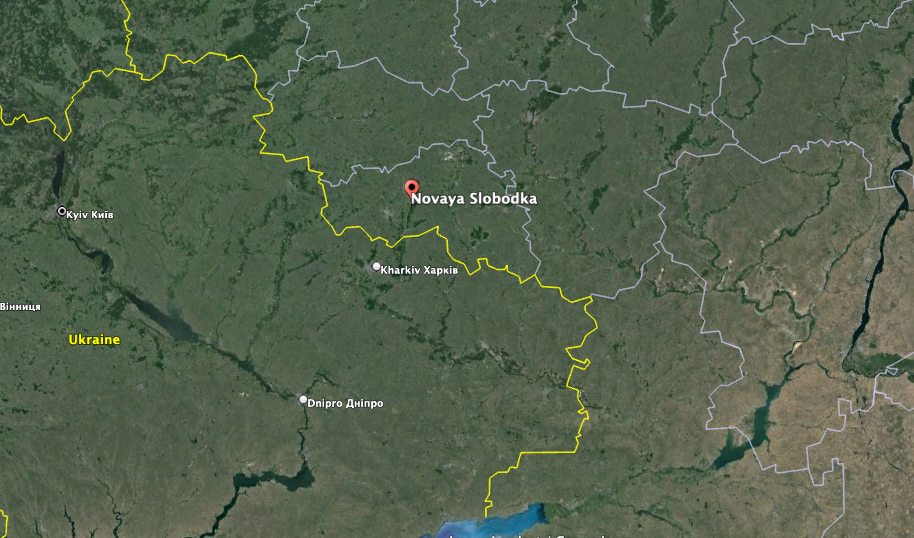
“At least one more device was destroyed in the Kursk region. Some of the balloons had 81-mm mines attached to them, others had corner reflectors for radars so that the air defense would mistake them for a drone.”
The balloons were designed to create fear among the Russian population, MASH suggested.
“They must fly over cities and drop bombs based on GPS signals,” according to the publication. “Weapons are intended for terror.”
Ukraine is increasing the frequency of its cross-border balloon launches, MASH added.
“Previously, the [balloons were] launched one at a time, now – several at once.”
In a speech on Tuesday, Russian Defense Minister Sergei Shoigu said that his forces have shot down 37 Ukrainian balloons since the full-scale invasion began.

Images emerged on social media Monday by Twitter user Daniel R (@DanielR33187703 ) showing what is purported to be the remains of several Ukrainian balloons that crashed in Russia. Some of the images were first posted on the Russian 1st Belgorod Detachment Telegram channel last month, around the same time as the MASH balloon stories.
In his Twitter thread, Daniel R posted almost a dozen pictures showing the balloons and components, which include a controller, munitions, a GPS tracker sending signals to a satellite, a Bluetooth module he claimed is “the brains” of the balloon and curiously an empty plastic soda bottle.
Balloon experts contacted by The War Zone viewed the images and offered some insights.
”It appears to be a close to zero pressure balloon of a type I like to call ‘trash bag’ balloons because you can construct them inexpensively from common easily sourced materials such as trash bags or painter’s tarp using tape or heat sealing, said Jamey D. Jacob, Williams Chair in Energy and Regents Professor, School of Mechanical & Aerospace Engineering, Executive Director, Oklahoma Aerospace Institute for Research and Education Director (OAIRE), Counter-UAS Center of Excellence Oklahoma State University. “The dark balloon may also indicate that it is a heliotrope aka solar balloon and uses solar heating for either all or partial buoyant lift.”
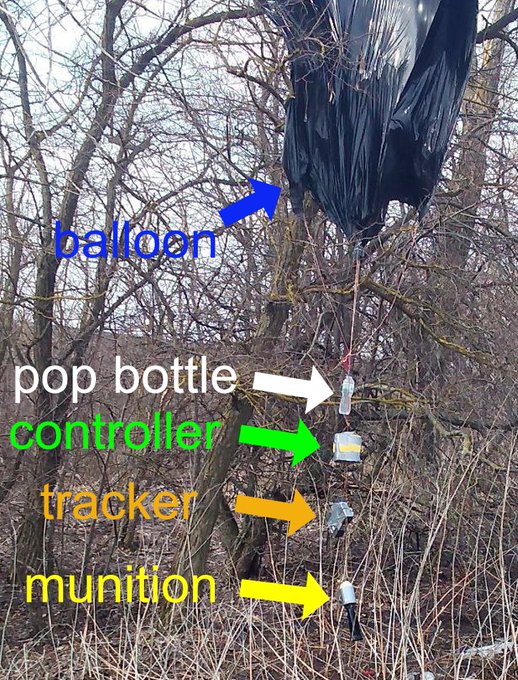
The use of a weather balloon “seems to justify this as it would be used for initial lift as a booster balloon until it bursts and the sustainer balloon is used thereafter,” said Jacob. “Absent a propulsion system it drifts with the prevailing [winds] but you have limited control by changing altitude. Depending on the balloon size, which is hard to determine here, it can carry around a kg to 10s of kg of payload.”
Jacob could not identify the payload, but said “the bottle may be used for ballast to control altitude.”
The components found in the balloon wreckage – including a SPOT Trace device that sends GPS location data directly to communication satellites – “are all standard balloon components,” said Jacob. “We use the SPOT tracker for instance for balloon tracking.“

Zach Yap, an R&D engineer at OAIRE, said the balloons in the Twitter images are akin to inexpensive ones available on Amazon like the TEDCO model below that retails for $20.

“Since these balloons are relatively simple in design, the payload system appears to be primitive, lacking guidance and navigation,” said Yap. “The system appears to operate on the idea that it will drift into an area where they have programmed it to drop the payload by cutting the flight line using a hot wire.”
Modern weather forecasts and open-source software make it “possible to forecast a balloon’s trajectory with a given ballast,” he added. “The water bottle is most likely a ballast that keeps the balloon’s performance predictable, such as its accent rate and float altitude. This also allows the possibility to control the balloon’s trajectory by dropping ballast to control the balloon’s altitude., but I do not see a system like that in the pictures shown.”
Given all that, Yap posited that the balloons “are mostly intended to act as nuisances and probe air defenses, as indicated by their lack of trajectory control and the presence of radar reflectors.”
The Ukrainian balloon wreckage was found more than a year after several Russian balloons with suspended radar reflectors were shot down near Kyiv.
As we reported at the time, it appeared to be an emerging Russian tactic to gather intelligence about Ukraine’s air defense capabilities, bait them into wasting precious ammunition and other resources, or otherwise distract or confuse their operators.
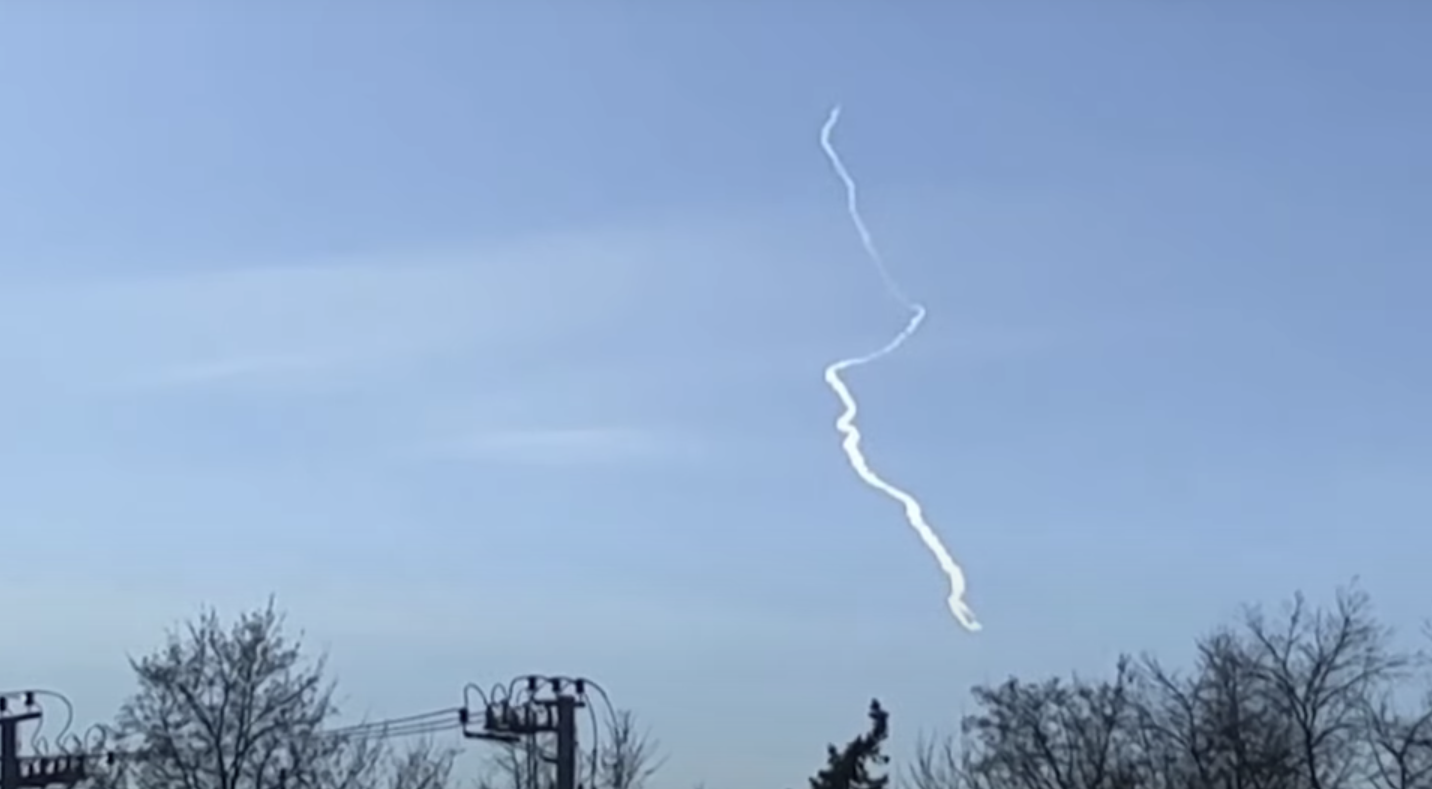
The shootdown by what Ukrainian officials said was a half dozen balloons followed other balloon or possibly balloon-related incidents in Ukraine, as well as neighboring Moldova and Romania, as you can read more about here. Modern military use of balloons, in general, became a major global concern after a series of recent shootdowns over the United States and Canada around the same time. There were no indications that these European incidents were related to the ones in North America.
Russia has a long history of using balloons for military purposes dating back to World War II.
From our deep dive into that subject:
“Beginning in the mid-1950s, thousands of free balloons drifted over the Warsaw Pact countries from the west; many of them flew into the territory of the Soviet Union. This was the impetus for the creation of a series of special balloon-intercepting aircraft, which you can read more about here. But it also spurred the Soviets to launch work on their own military balloons. Accordingly, in 1956, the OKB-424 design bureau — also known as the Dolgoprudny Automatics Design Bureau (DKBA) — was established, especially for the task of making new military aerostats.”
The U.S. is now looking toward balloons to provide a number of advanced capabilities during future conflicts, including the delivery of weaponized drones deep behind enemy lines. You can read all about these initiatives here.
Ukrainian officials, meanwhile, downplayed the Russian balloon incursions.
The balloons did not represent an innovation of any kind, Ukrainian Air Force spokesman Col. Yuri Ignat stressed on Ukrainian national television.
“Those are methods that have been in use for a long time already and are outdated,” Ignat said. “It’s just a normal ballon, 1.5 meters [just under 5 feet] wide but the size can differ though. It’s filled with gas and flies up.”

The balloons have “a corner reflector…tied to it, and a radio localization station can receive its signal that’s then reflected by the device,” said Ignat, using another term commonly used to describe radar reflectors. “That means it’s an air target and we need to apply our air defense capabilities.”
“The enemy wants us to use our force and means, our air defense missiles, against those balloons and their reflectors,” he said. “They are the essential element [of our air defense system], they defend our critical infrastructure and other critical objects.”
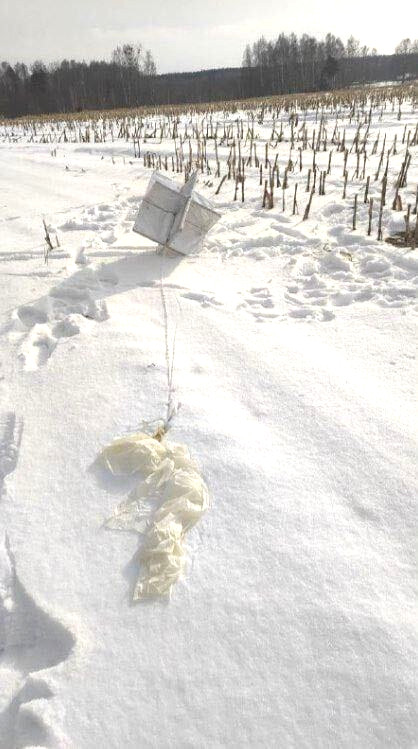
Like the Ukrainian balloons found in Russia last month, the Russian balloons also had plastic soda bottles attached to them, as you can see in this image below. It was posted Monday by Twitter user Daniel R.

Russia and Ukraine aren’t the only countries that have employed weaponized balloons. On Nov. 3, 1944, Japan began to launch what would eventually amount to some 9,000 balloons at the U.S. over a five-month period, according to the National Museum of the Air Force.
“They were carried by high altitude winds more than 6,000 miles eastward across the Pacific to North America,” the museum states. “Perhaps a thousand of these reached this continent, but there were only about 285 reported incidents. Most were reported in the northwest United States, but some balloons traveled as far east as Michigan.”
“On May 5, 1945, six picnickers were killed in Oregon when a balloon bomb they dragged from the woods exploded,” according to the museum. “The U.S. government quickly publicized the balloon bombs, warning people not to tamper with them. These were the only known fatalities occurring within the United States during World War II as a direct result of enemy action.”
Beyond a limited number of isolated incidents, the damage caused by the balloon bombs was minor.
“However, the incendiaries that these balloons carried did pose a serious threat to the northwestern U.S. forests during dry months. These balloons also offered a vehicle for germ warfare if the Japanese had decided to employ this weapon.”
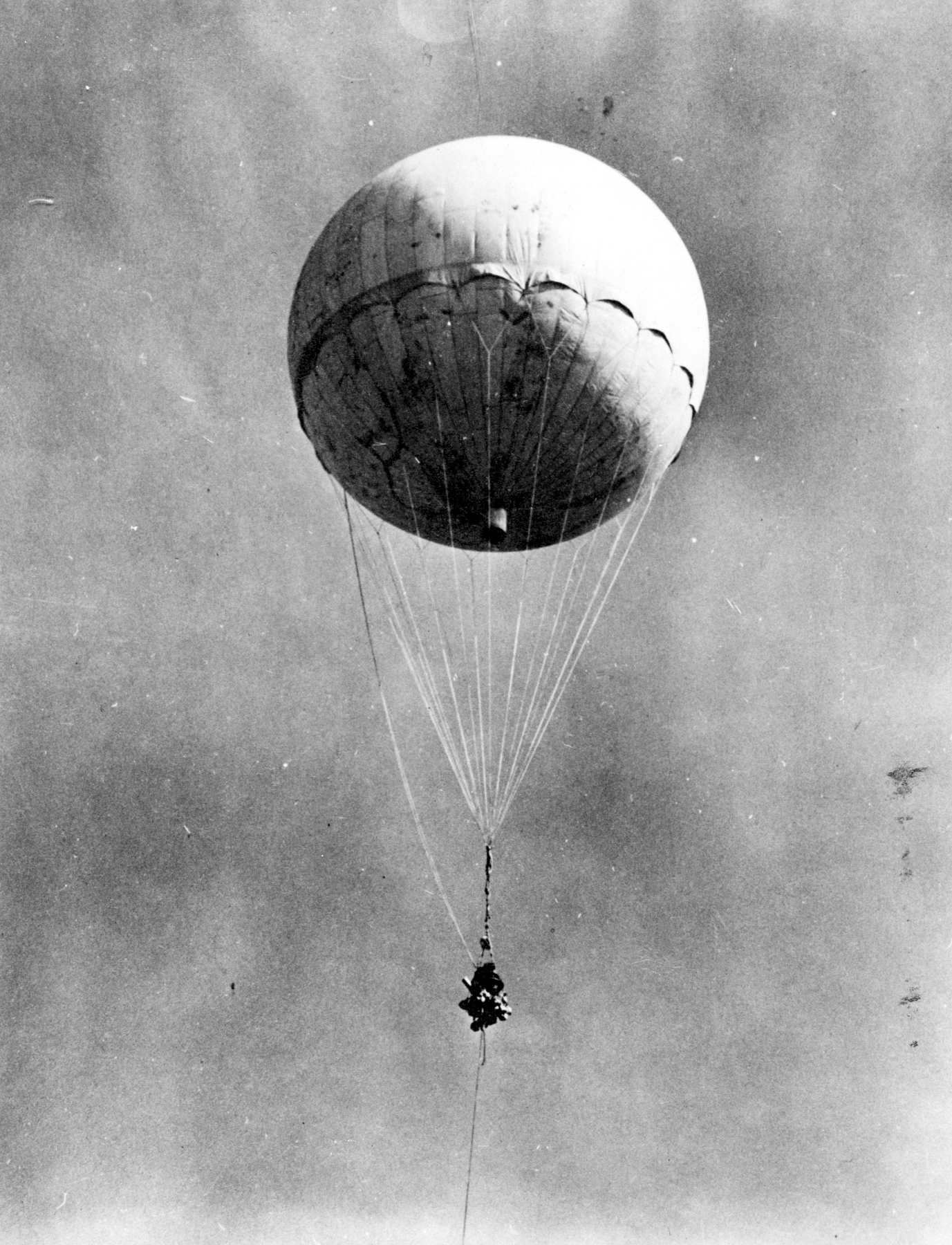
A British effort to attack Germany with balloons, initiated March 20, 1942 and called Operation Outward, was decidedly more effective.
“Altogether, during the life of Operation Outward 99,142 balloons were launched,” according to the Warfare History Network. “About 10,000 more fire balloons went up than wire balloons, but both did their jobs. Perhaps Outward’s greatest achievement occurred on July 12, 1942, when a wire balloon floated over a 110,000-volt power line near Leipzig. The trailing wire shorted a circuit breaker at the Böhlen power station, which ignited a fire and explosion that destroyed the power station and left a wide area without power.”
Operation Outward forced Germany to expend valuable resources.
“It wasn’t long before the British learned of forest fires near Berlin and as far away as East Prussia and Hungary, as well as reported electrical outages,” the publication noted. “They also learned that the Luftwaffe had assigned as many as 250 fighter planes (in one case) to shoot the balloons out of the sky.”
“This was good news. It meant that the enemy was forced to dedicate precious fuel, aircraft, and pilots. These resources were diverted from offensive operations, and it cost the Germans far more to defend against the balloons than it cost the British to launch them.”

Given Ukraine’s continuing interest in disrupting the Russian homeland and the very low cost of construction, it is likely we will see more of these balloons float across the border. Rigged properly, balloons are the cheapest standoff weapon available, though they lack the reliability and control of more complex systems, like long-range one-way attack drones. Still, with Ukrainian innovation what it is, we could see further improvements that make them more effective.
Whether they remain merely a nuisance or cause major problems remains to be seen.
Contact the author: howard@thewarzone.com
